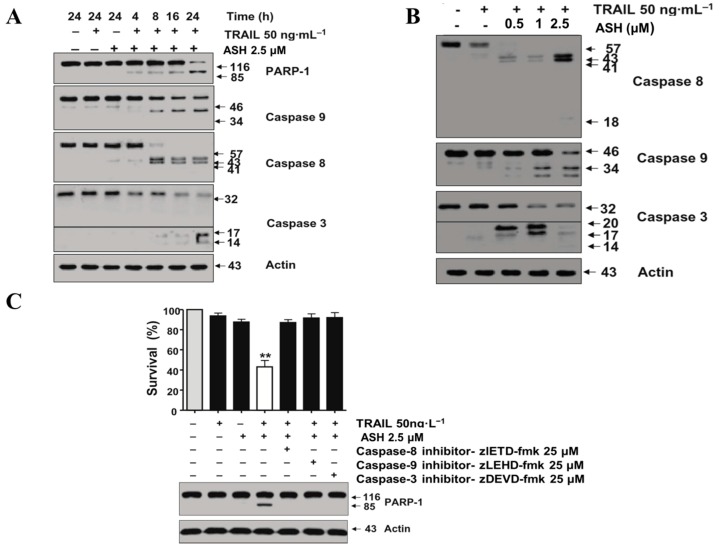Figure 3.
Combination therapy with ASH and TRAIL results in the activation of caspase in the HepG2 cell. (A) The cleavage of caspases and PARP-1 in HepG2 cells were analyzed via Western blotting after following 4–24 h treatment with 2.5 µM ASH and/or 50 ng/mL TRAIL, and the control group received an equal amount of vehicle (PBS + 0.01% BSA + 0.1% DMSO). (B) Western blotting was applied to determine the cleavage of caspase family members in HepG2 cells after treatment with 0.5–2.5 µM of ASH and 50 ng/mL TRAIL for 12 h. (C) The specific caspases inhibitors were applied to HepG2 cells to block the caspase pathway. Then the cells were exposed to 2.5 µM ASH and/or TRAIL 50 ng/mL for 12 h. Cells’ survivals were assessed via the Trypan blue dye exclusion assay and Western blotting was applied to determine the cleavage of PARP-1. ** p < 0.01.

